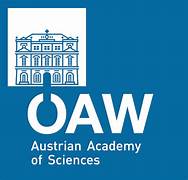Meridiana: Difference between revisions
From All Skies Encyclopaedia
(Created page with "{{DISPLAYTITLE:Meridiana}} Meridiana is a modern star name adopted by the International Astronomical Union in the IAU-Catalog of Star Names (IAU-CSN). Its origin is Latin. It is the name of HIP94114 (α CrA, HR 7254) in constellation CrA. ==Etymology and History== The Latin-Arabic name "Alfecca meridiana" is mentioned in Allen (1899, 173). There, it is attributed to "Reduan" (sic!) = Ali bin Radwan's commentary to his Tetrabiblos translation (10th century). Arabic ن...") Tag: Disambiguation links |
IanRidpath (talk | contribs) No edit summary |
||
| Line 1: | Line 1: | ||
{{DISPLAYTITLE:Meridiana}} |
{{DISPLAYTITLE:Meridiana}} |
||
Meridiana is a modern star name adopted by the International Astronomical Union in the IAU-Catalog of Star Names (IAU-CSN). Its origin is Latin. It is the name of |
Meridiana is a modern star name adopted by the International Astronomical Union in the IAU-Catalog of Star Names (IAU-CSN). Its origin is Latin. It is the name of HIP 94114 (α CrA, HR 7254) in constellation CrA. |
||
==Etymology and History== |
==Etymology and History== |
||
Latest revision as of 21:04, 18 June 2025
Meridiana is a modern star name adopted by the International Astronomical Union in the IAU-Catalog of Star Names (IAU-CSN). Its origin is Latin. It is the name of HIP 94114 (α CrA, HR 7254) in constellation CrA.
Etymology and History
The Latin-Arabic name "Alfecca meridiana" is mentioned in Allen (1899, 173). There, it is attributed to "Reduan" (sic!) = Ali bin Radwan's commentary to his Tetrabiblos translation (10th century). Arabic نير الفكّة nayyir al-fakka "the bright (star) of the broken (dish)" in analogy to the Arabic term for CrB. WGSN chose only the second (Latin) term: "Meridiana", the southern (one of the two Alfeccas).
Mythology
IAU Working Group on Star Names
The name was adopted by the IAU WGSN on 2017/09/05.
Weblinks
- Website of the IAU WGSN: https://exopla.net/
Reference
- References (general)
- Allen (1899, 173) with additional research by WGSN




